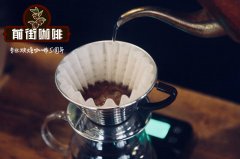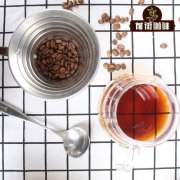Introduction to the origin of Guatemalan coffee flavor in eight major producing areas and microclimate

Professional coffee knowledge exchange more coffee bean information please follow the coffee workshop (Wechat official account cafe_style)
In Guatemala, which is famous for its highland terrain, the famous coffee producing areas include:
Antigua (Antiqua)
Class (Coban)
Attilan (Atitlan)
Vivette Nanguo (Huehuetenango)
San Marco (San Marco)
Among them, Vivette Nanguo is the top boutique coffee producing area, where the famous Incht Manor is located, and Incht has won many cup of excellence championships.
Every year, the online bidding held by Incht Manor attracts raw bean buyers and even bakers from all over the world.
Among them, Pandora's Pagamara has a special flavor, which is a rare delicious coffee, which can be compared with Panama's Geisha.
In Vivette Nanguo, the higher the origin, the better the quality of the coffee.
SHB (Strictly Hard Bean) grows above 4500 feet above sea level.
In addition to Vivette Nan fruit, Antigua is also of excellent quality, with a traditional Guatemalan coffee flavor.
Antigua has a mixture of Mayan culture and the Spanish colonial capital. It is a beautiful old city itself, preserving rare colonial buildings and cityscape.
Common coffee tree species are bourbon, Kaddura, Kaduai and other ancient varieties.
Good Antigua can often have tropical fruit, marshmallows, caramel, and even smoky flavors.
Have you ever wondered how many stories are behind this beautiful cup of coffee?
This article discusses the micro-climate features which are closely related to coffee.
After the impact of the Kuroshio movement, people gradually began to have professional knowledge and technology related to the coffee industry. In addition to the annual large-scale coffee-related exhibitions, barista competitions and the rapid development of baking equipment, our loyalty and love for coffee is no longer just to meet the status quo. For a professional coffee glutton, there are many things about tasting a good cup of coffee, among which the most profound key is the "miniature gas queen" in each producing area, which is the key to motivate the whole body.
The importance of microclimate
On the most suitable golden coffee belt, the most basic condition is that the annual rainfall is 1000mm, and the average temperature is in the range of 20 ℃. Too many or too few of these factors are not enough. Even in the same producing area, there are many differences in coffee beans due to slight differences in climate characteristics (flavor, stratification, sour-sweet fusion, aroma characteristics, etc.). Each different climate combination gives coffee beans an amazing personality and characteristics, and there are still many unique flavors that have not been discovered or defined. This is the excellent charm of the microclimate, causing many coffee lovers to pursue the highest state crazily, even CATAMONA!
The most brilliant center of Maya Wenming
Guatemalan coffee
Central America enjoys a unique geographical environment, with North and North America in the north and South America bordering on the south. Facing the Caribbean Sea and the Gulf of Mexico, the climate is relatively hot and humid, and it has always been an important coffee producing area in the world.
Coffee has been the lifeblood of Guatemala's economy for more than a hundred years. The crisscross of mountain topography, volcanic lakes, plains and mountains, and the neighboring Atlantic and Pacific oceans interweave more than 300 kinds of microclimates, thus creating a unique flavor of different regions.
The National Coffee Association of Guatemala (ANACAFE) is roughly divided into eight producing areas according to the conditions of coffee flavor, climate, soil and altitude.
Location of eight major producing areas
Microclimate in eight major producing areas
Andigua producing area / average temperature 18 ℃-22 ℃
Fertile volcanic soil, low humidity, sufficient sunshine and cool evening breeze are the characteristics of this area. The area is surrounded by three volcanoes. Whenever the Fuego volcano erupts, the mineral-rich ash mixes with the soil to make up for the lack of rainfall and gives the coffee a special smoky aroma.
Coffee flavor: sweet and sour balance, unique cocoa aroma. It is generally mentioned that the standard acidity of Guatemala is based on this area.
Traditional Attland producing area / average temperature 20 ℃-23 ℃
In this area, among the three major volcanic producing areas of the country, the soil is the most rich in organic matter. 90% of the coffee plants are planted along extremely steep volcanic slopes, and the daily cool breeze from the Atitl á n lake gives the region's microclimate its own style and characteristics.
Coffee flavor: strong flavor, with intoxicating aroma, sweet in sour taste.
Koban rainforest producing area / average temperature 15 ℃-20 ℃
The year-round cloud, abundant rainfall and cool climate are mainly divided into rainy season and rainy season in this area. At the same time, affected by the tropical climate of the Atlantic basin, the cultivated soil is mostly limestone and clay.
Coffee flavor: the characteristics are very different from other producing areas, with bright and subtle sour taste, there is also a light wine aroma.
New Oriental producing area / average temperature 18 ℃-25 ℃
Rain Water is abundant in this area, and the climate is similar to that of Koban rainforest. Because it is located in the resting volcanic zone, the soil contains a lot of metamorphic rocks and minerals, which is very different from other areas with frequent volcanic activity.
Coffee flavor: contains aroma, obvious acidity and good texture. This area is the newest coffee producing area in Guatemala.
San Marcos volcano / mean temperature 21 ℃-27 ℃
The warmest coffee producing area in Guatemala has abundant rainfall, the densest rainy season and the earliest flowering period. Because of the unexpected rainfall during the harvest season, most growers dry coffee beans in the sun first and then by machine.
Coffee flavor: bright sour fruit, full bean body, with fresh, light floral aroma.
Akatilanda Valley producing area / average temperature 14 ℃-31 ℃
The coffee in this area grows at 2000 meters, and the rough, sandy soil is rich in minerals because of the Fuego volcano nearby. Caressed by the mild sea breeze of the Atlantic Ocean and significant climate differences, coffee beans are more suitable for sun-drying.
Coffee flavor: the sweetness is good, the fruit acidity is delicate, and the flavor and aroma are loved by most people.
Weiwei plateau producing area / average temperature 20 ℃-24 ℃
Among the three non-volcanic producing areas, this area is the driest and highest-lying area in the single coffee producing area. It is also the most rugged and remote part of Guatemala, where coffee can be grown at nearly 6500 feet because of the dry, hot wind from Mexico and frost-free mountains.
Coffee flavor: bright and delicate acidity, with a slight wine aroma.
Farrakhan Nice Plain / average temperature 12 ℃-26 ℃
The volcano in this area is high above sea level and the soil is rich in pumice. Farrakhan Nice Plain is still an active volcanic area, so that the coffee in this area is similar to Antigua.
However, Rain Water's abundant, high and varied humidity, and large temperature difference give the Farrakhan Nice Plain a very different flavor.
Coffee flavor: elegant aroma, mild and mellow overall texture, with special and pleasant acidity.
Important Notice :
前街咖啡 FrontStreet Coffee has moved to new addredd:
FrontStreet Coffee Address: 315,Donghua East Road,GuangZhou
Tel:020 38364473
- Prev

Is this where Starbucks Guatemalan coffee beans originally came from? Is the instant coffee in Guatemala good?
Professional coffee knowledge exchange more coffee bean information please follow the coffee workshop (Wechat official account cafe_style) came to Guatemala can not help but taste is Guatemalan coffee before I always wanted to write a topic to introduce, but always felt that just arrived, should first try more before deciding to write those brands after a period of public inspection and covert interviews, probably selected four brands with
- Next

Guatemala Coffee Farmer and South Korea quickly sign Free Trade Agreement Guatemala Antigua Coffee Export
Professional coffee knowledge exchange more coffee bean information please follow the coffee workshop (Wechat official account cafe_style) local media reported that in order to avoid being isolated from the Asian market, Ricardo Arenas Menes, chairman of the Guatemalan Coffee Association (Anacafe), called on Guatemala to sign a free trade agreement between Central America and South Korea. According to reports, danger
Related
- Detailed explanation of Jadeite planting Land in Panamanian Jadeite Manor introduction to the grading system of Jadeite competitive bidding, Red bid, Green bid and Rose Summer
- Story of Coffee planting in Brenka region of Costa Rica Stonehenge Manor anaerobic heavy honey treatment of flavor mouth
- What's on the barrel of Blue Mountain Coffee beans?
- Can American coffee also pull flowers? How to use hot American style to pull out a good-looking pattern?
- Can you make a cold extract with coffee beans? What is the right proportion for cold-extracted coffee formula?
- Indonesian PWN Gold Mandrine Coffee Origin Features Flavor How to Chong? Mandolin coffee is American.
- A brief introduction to the flavor characteristics of Brazilian yellow bourbon coffee beans
- What is the effect of different water quality on the flavor of cold-extracted coffee? What kind of water is best for brewing coffee?
- Why do you think of Rose Summer whenever you mention Panamanian coffee?
- Introduction to the characteristics of authentic blue mountain coffee bean producing areas? What is the CIB Coffee Authority in Jamaica?

